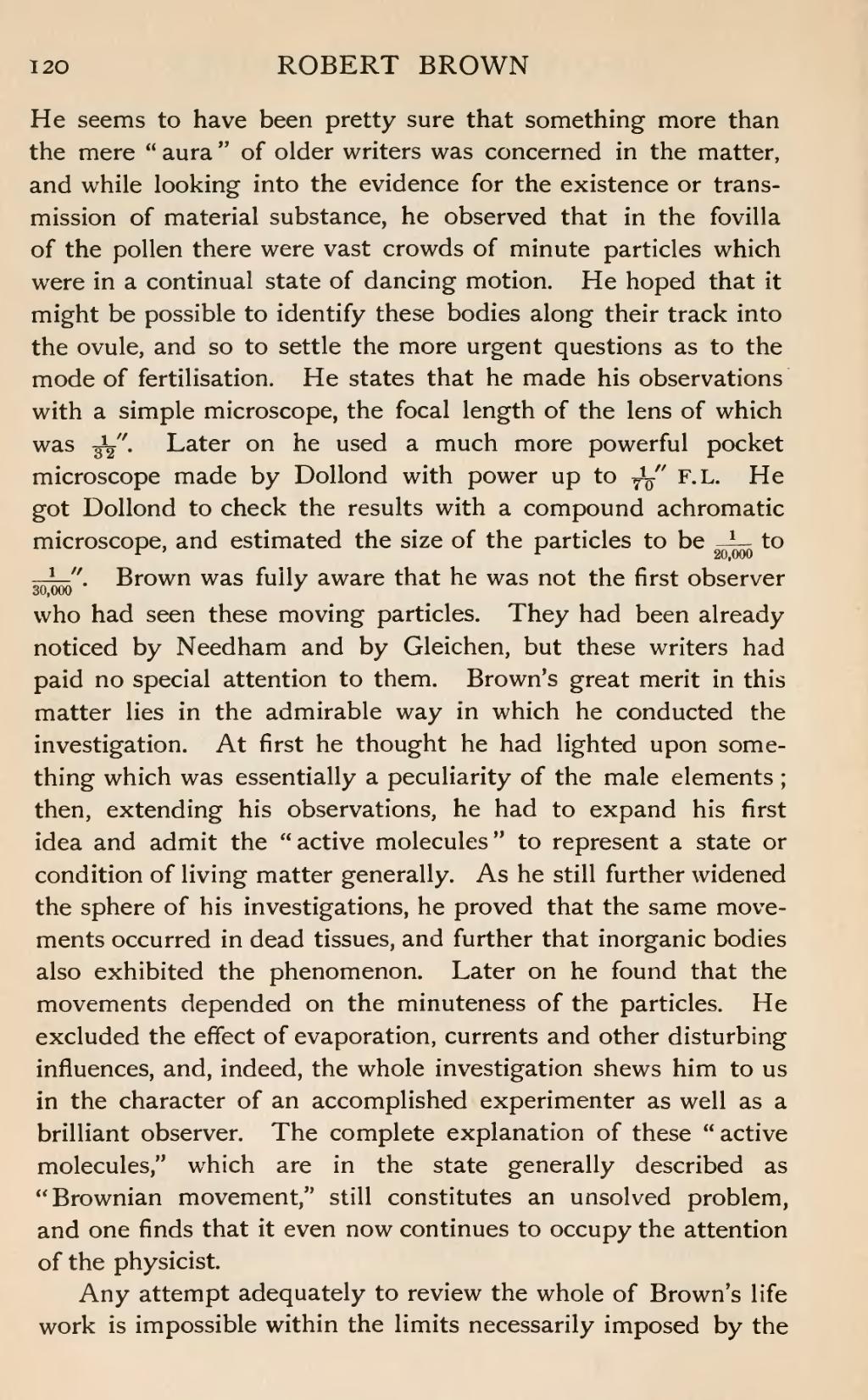He seems to have been pretty sure that something more than the mere "aura" of older writers was concerned in the matter, and while looking into the evidence for the existence or transmission of material substance, he observed that in the fovilla of the pollen there were vast crowds of minute particles which were in a continual state of dancing motion. He hoped that it might be possible to identify these bodies along their track into the ovule, and so to settle the more urgent questions as to the mode of fertilisation. He states that he made his observations with a simple microscope, the focal length of the lens of which was 1⁄32". Later on he used a much more powerful pocket microscope made by Dollond with power up to 1⁄70" F.L. He got Dollond to check the results with a compound achromatic microscope, and estimated the size of the particles to be 1⁄20,000 to 1⁄30,000". Brown was fully aware that he was not the first observer who had seen these moving particles. They had been already noticed by Needham and by Gleichen, but these writers had paid no special attention to them. Brown's great merit in this matter lies in the admirable way in which he conducted the investigation. At first he thought he had lighted upon something which was essentially a peculiarity of the male elements; then, extending his observations, he had to expand his first idea and admit the "active molecules" to represent a state or condition of living matter generally. As he still further widened the sphere of his investigations, he proved that the same movements occurred in dead tissues, and further that inorganic bodies also exhibited the phenomenon. Later on he found that the movements depended on the minuteness of the particles. He excluded the effect of evaporation, currents and other disturbing influences, and, indeed, the whole investigation shews him to us in the character of an accomplished experimenter as well as a brilliant observer. The complete explanation of these "active molecules," which are in the state generally described as "Brownian movement," still constitutes an unsolved problem, and one finds that it even now continues to occupy the attention of the physicist.
Any attempt adequately to review the whole of Brown's life work is impossible within the limits necessarily imposed by the
